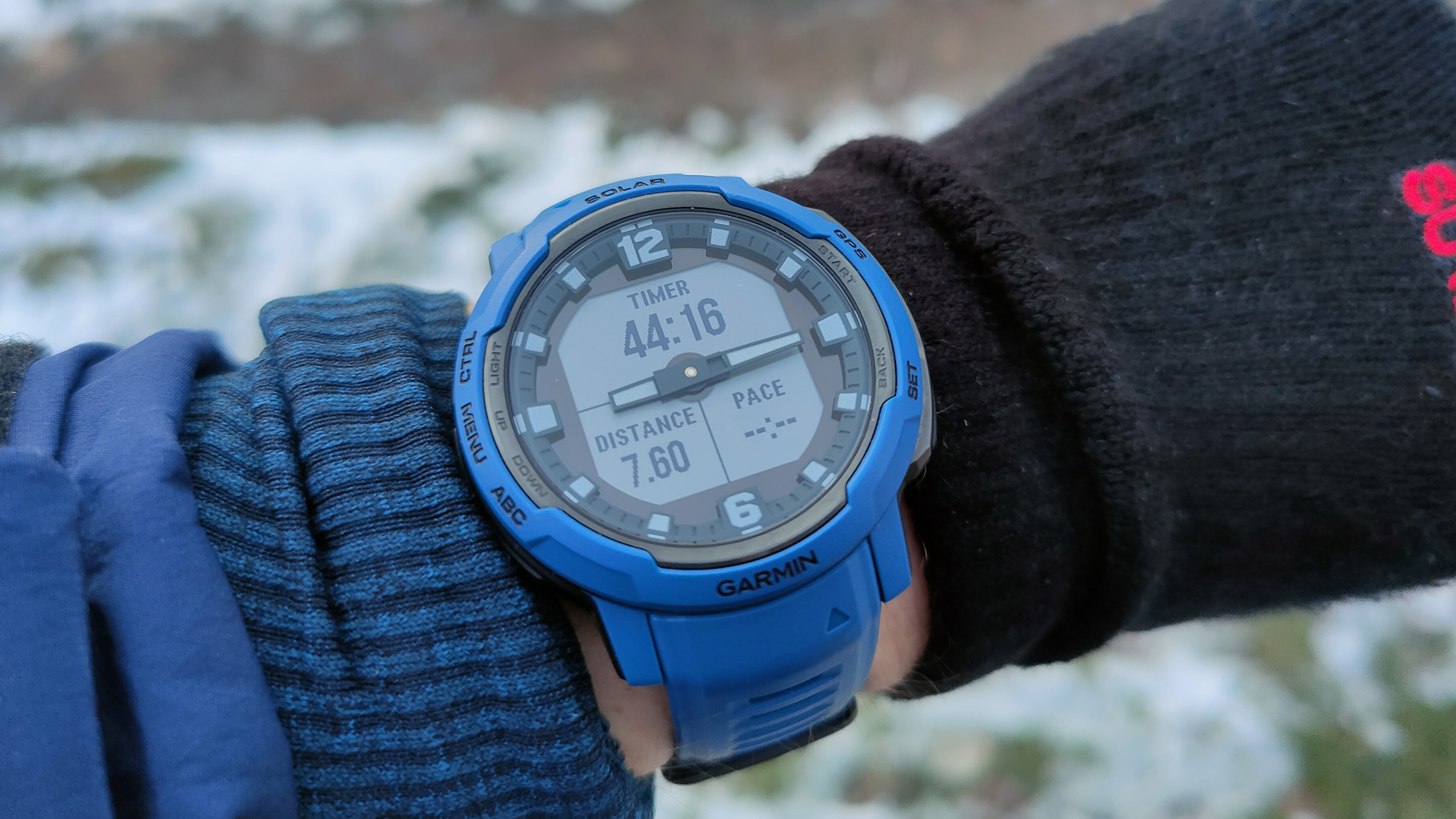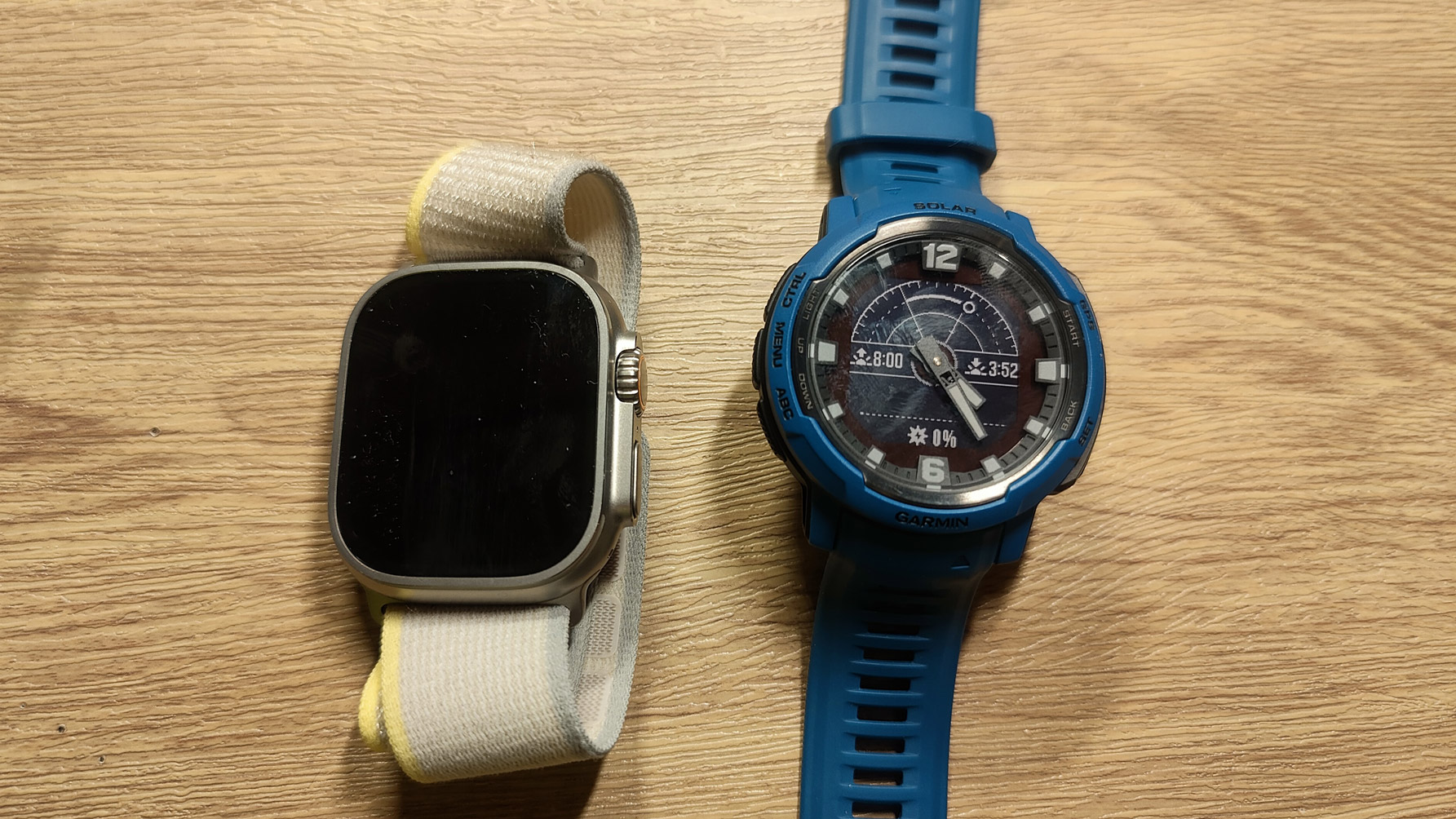For a couple of weeks, I was using the Apple Watch Ultra to track my runs, and I absolutely loved it. I’m not normally an Apple Watch user on a day-to-day basis, so getting to grips with some of the Ultra’s new features, like its ability to calculate running power without utilizing a heart rate monitor, was enlightening.
The GPS is pinpoint-accurate, so much so that Apple claims the Apple Watch Ultra has “the most accurate GPS of any smartwatch in an urban area.” In fact, the extremely accurate GPS is helping me get the most up-to-date information on my pace and running route as I train for next year’s Brighton Marathon (opens in new tab).
The screen is beautiful, the interface intuitive — thanks to the addition of the Action button. As a regular Garmin user, I don’t really engage with a watch that has such a comprehensive array of third-party apps. Using Citymapper to navigate London during the train strikes was quite useful; Spotify was a joy. Even the Oceanic+ app, which is as accurate as a real dive computer according to an expert, is interesting to have on the Watch.
But not everything is perfect on the watch. Apple’s barometer and altimeter could use some work, says our buying guides editor Michelle Rae Uy, who test-drove the tech during her Incas trek.
As TechRadar’s resident Fitness and Wellbeing Editor, I use smartwatches primarily for training as opposed to extending my digital ecosystem, and that’s been a matter of preference up until now. I usually get sick of notifications on the best of days, even when they’re being shuttled to my wrist in all their crisp AMOLED glory. So I was shocked at how easily I adjusted to answering calls and responding to emails on a top-of-the-line Apple Watch. However, it was soon time for me to trade the watch in and test something else. That’s where everything changed for me.

The Garmin Instinct Crossover arrived. To be clear, it can’t hold a candle to the Apple Watch Ultra in most technical respects. It has a monochrome memory-in-pixel screen, which is practically archaic by premium watch standards. It’s thicker, rising a full 1.6cm off my wrist, and contains no third-party app support, although you can control the music from your smartphone. But in its favor, the Crossover is significantly cheaper and you can accept and reject calls, although there’s no speaker to answer calls. You can also read texts and other notifications, even with the small matter of two very analog hands overlaid on top of the interface.
The hands are, in fact, what make the Instinct Crossover special, as the memory-in-pixel screen lies under the analog hands. They’re the reason for this watch’s particular thickness, adding another few millimeters onto the already-chunky Garmin Instinct 2. When the watch’s smart functionalities are not in use, the watch’s hands point to the correct time.
However, when you press one of the typical five Garmin buttons to select something from the menu, whether a workout mode or a display of your historic metrics, the watch’s hands shift into a horizontal line, so you can scroll through the menu items with minimal disruptions. Neat, eh? When you’re done, press the “back” button, and the watch will shift back to the correct time thanks to RevoDrive technology.
It’s still a smart watch in the technical sense, but most of the non-training-related smart tech was stripped away. It’s still got all the Instinct 2’s usual five-star smarts, including organization of training into heart rate zones, heat mapping of route based on your heart rate throughout, and a Body Battery figure to minimize overexertion. This last one, in particular, has been useful during my marathon training, ensuring I take the rests necessary to perform at peak capacity.

It looks like any other chunky tactical watch out there, with a battery that lasts a frankly enormous 28 days in smartwatch mode, compared to the Ultra’s 36 hours. It’s such a weight off my mind not having to worry about battery life, but more to the point, the Crossover offers training insights that equal, and often exceed, what Apple can provide — although for graphs and GPS maps, you’ll need to dive into the Garmin Connect app as the hands get in the way of on-screen tech. It’s not quite as lifestyle-oriented as the Apple Watch, nor is it as technologically advanced, but I love the hybrid approach with the analog hands and limited information fed to you on-wrist.
I don’t want to read emails, especially not while I work out. The open road is an escape from the demands of my life, so having the Instinct Crossover feed me the information I need in that moment, without a bright glaring screen and WhatsApp or Gmail only a touch away, allows me that escape.
I’ve been saying for a while that analog watches have always looked better than smartwatches, and I believe once we all get sick of yet another screen in our lives, smartwatches will begin to return to this kind of pseudo-analog hybrid, an “invisible smartwatch” if you will. It’s outrageously gimmicky, but I could watch those hands spin into a line at the press of a button all day. I’ve worn it for ten days and the novelty’s not yet worn off.
The screen, while basic, is incredibly easy on the eyes. I don’t get too much information from it: just enough to benefit my life and training. The Instinct 2 is already a five-star watch, and adding the analog component was a stroke of genius.
It’s a fun watch to wear — the analog hands are a great addition to what was already one of the best Garmin watches — and I truly believe it’s a sign of things to come in the smartwatch market.




